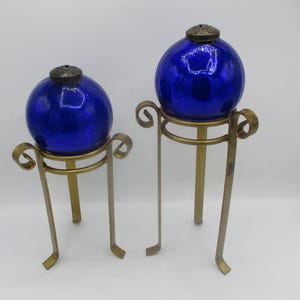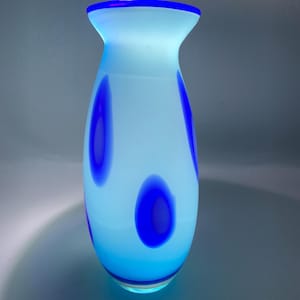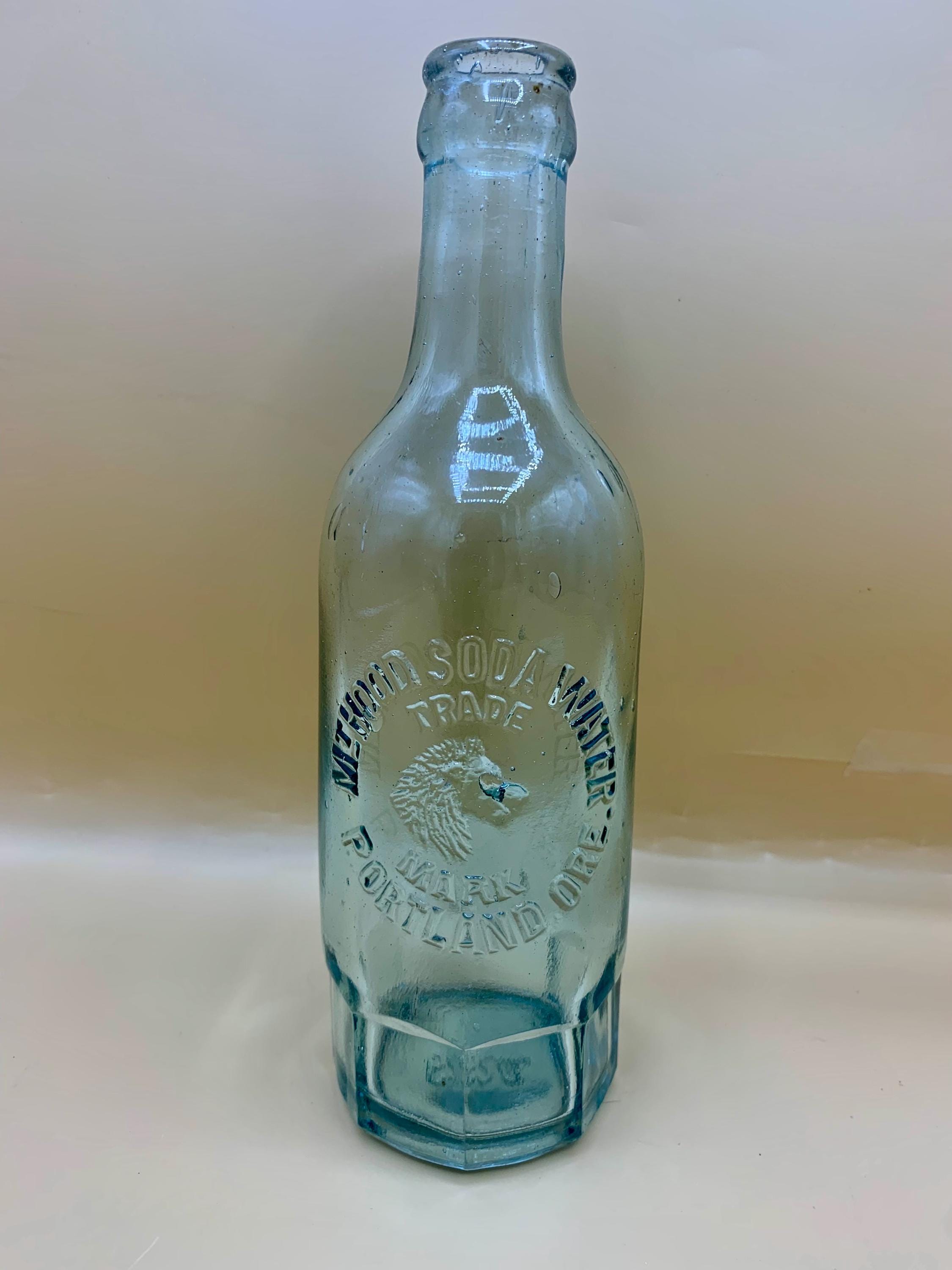

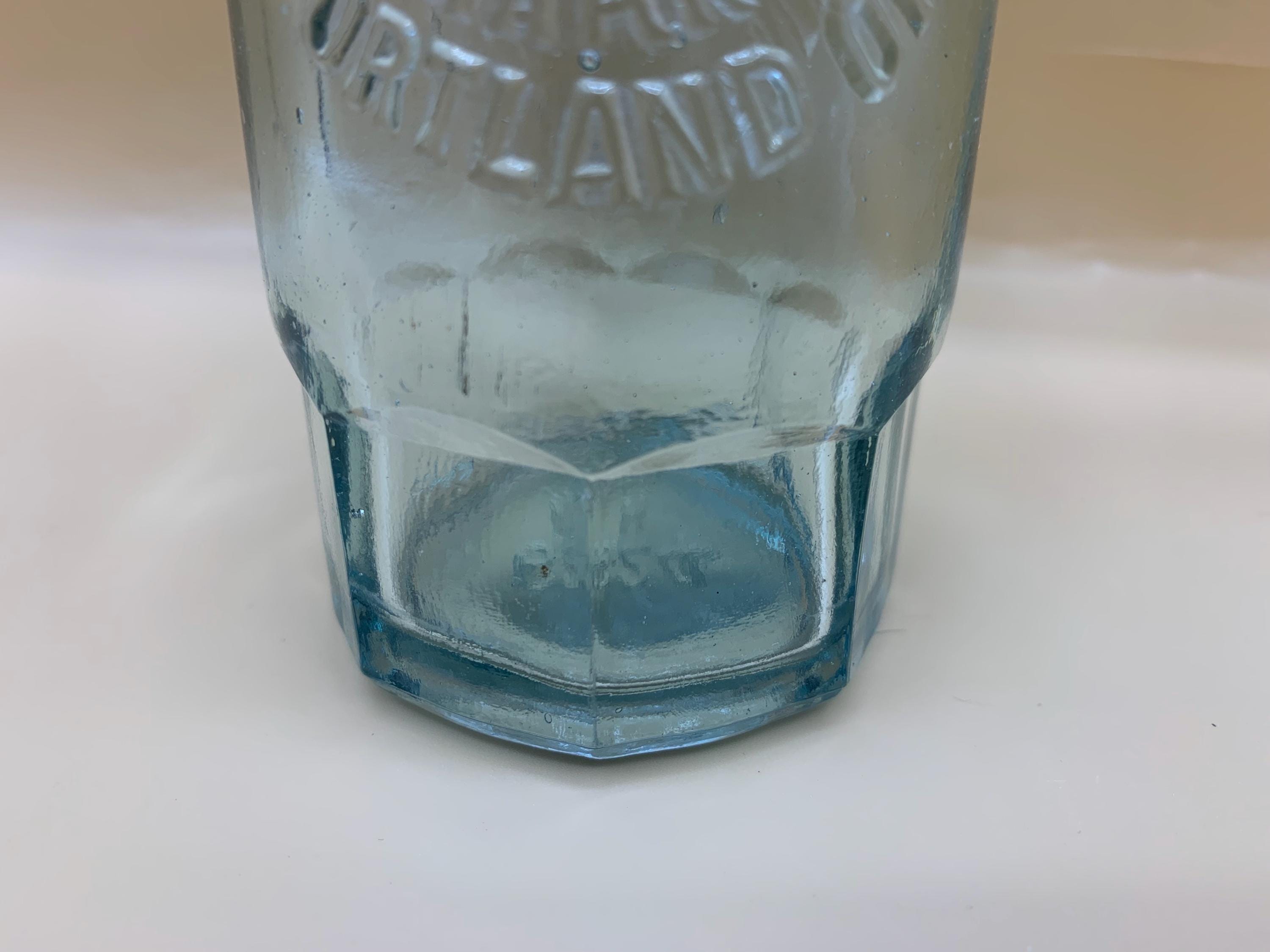

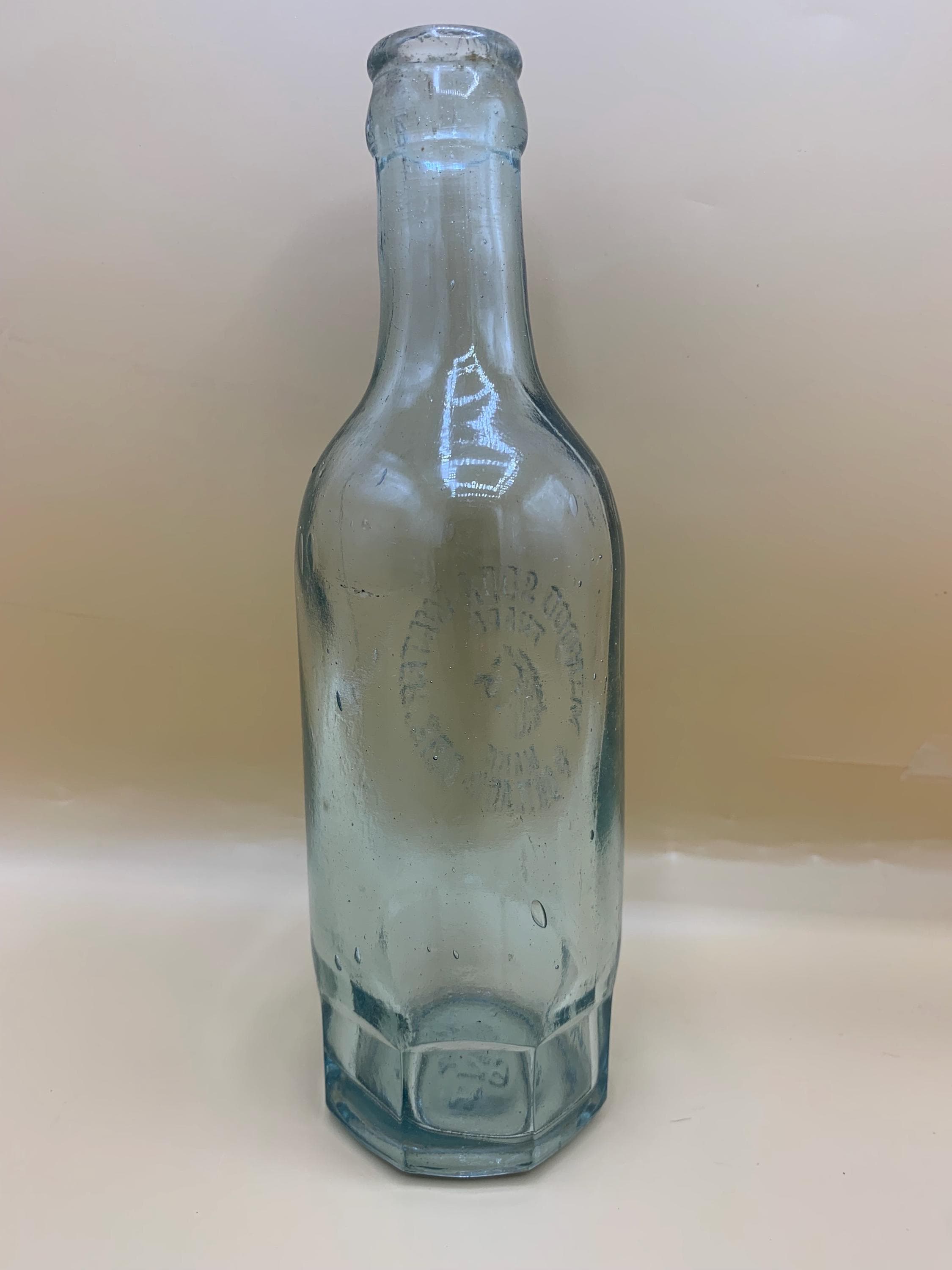
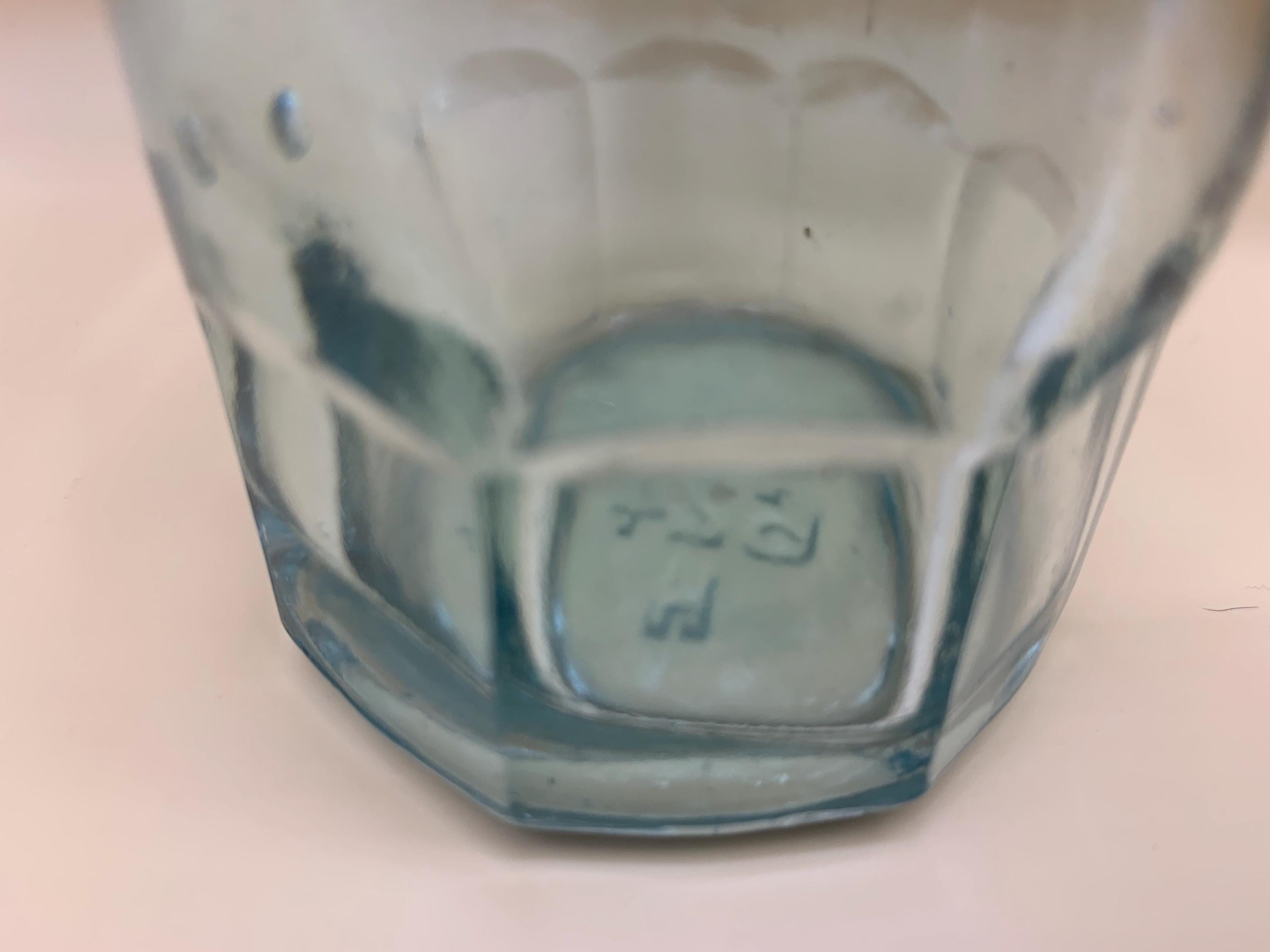
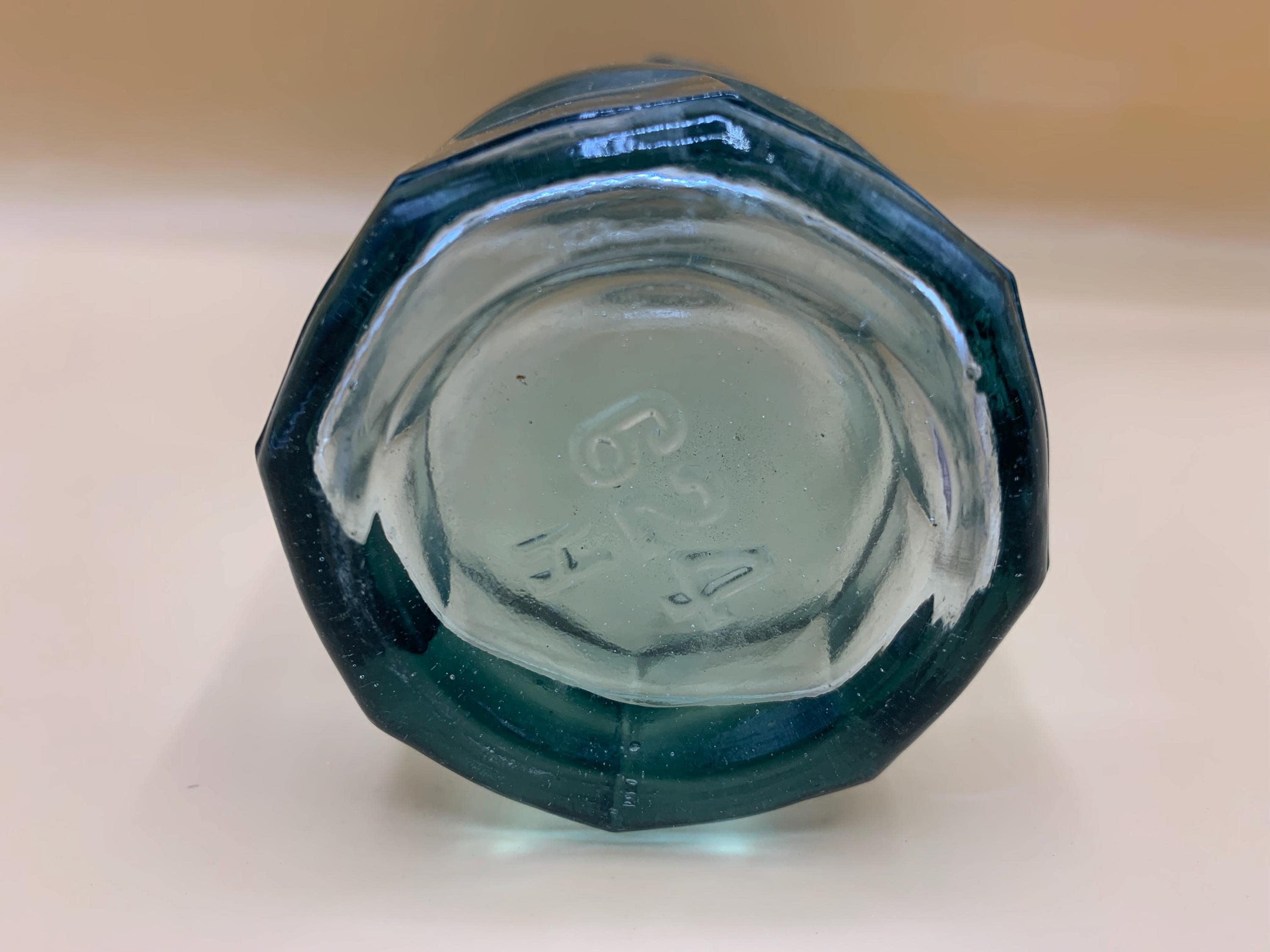
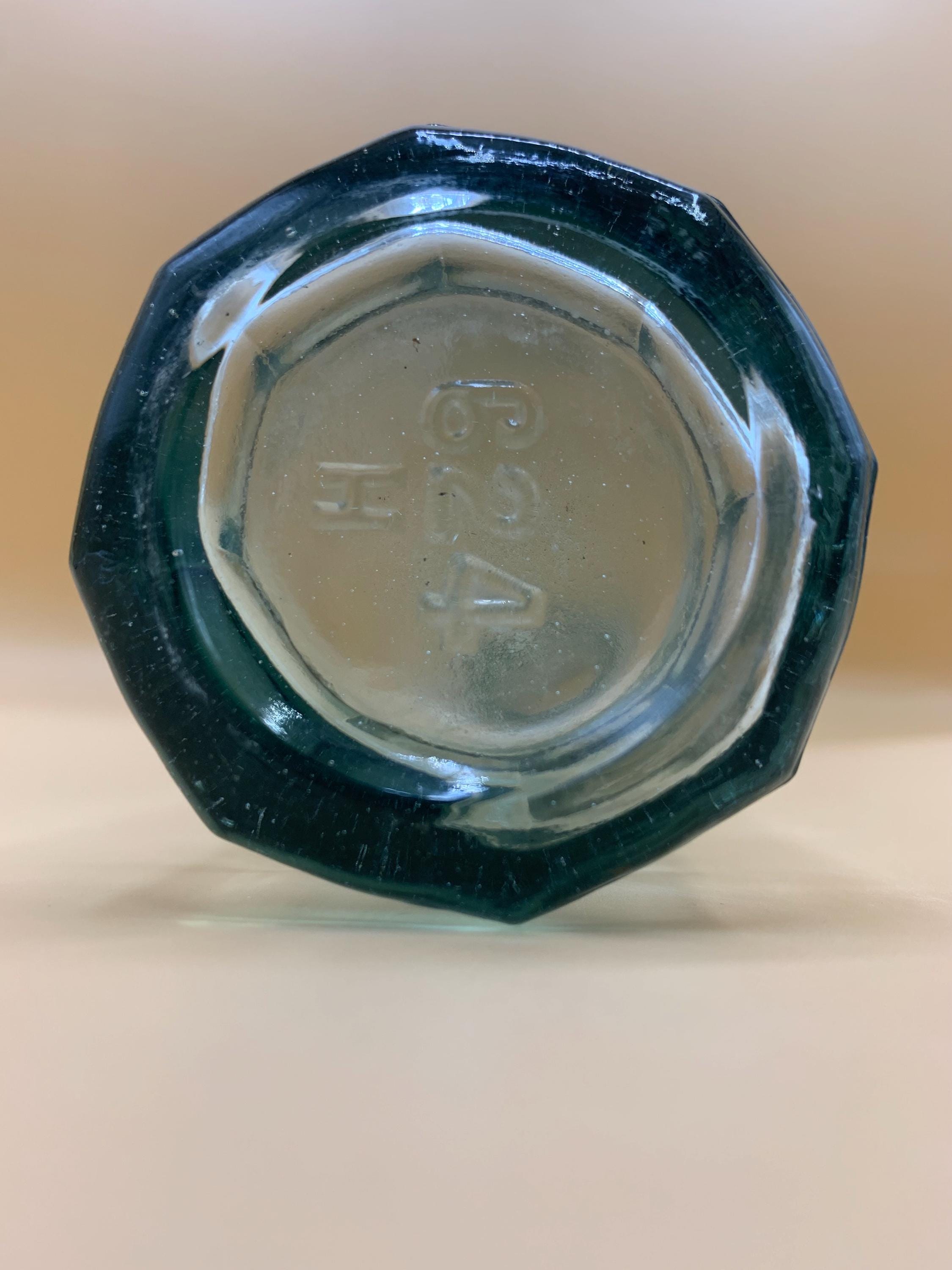
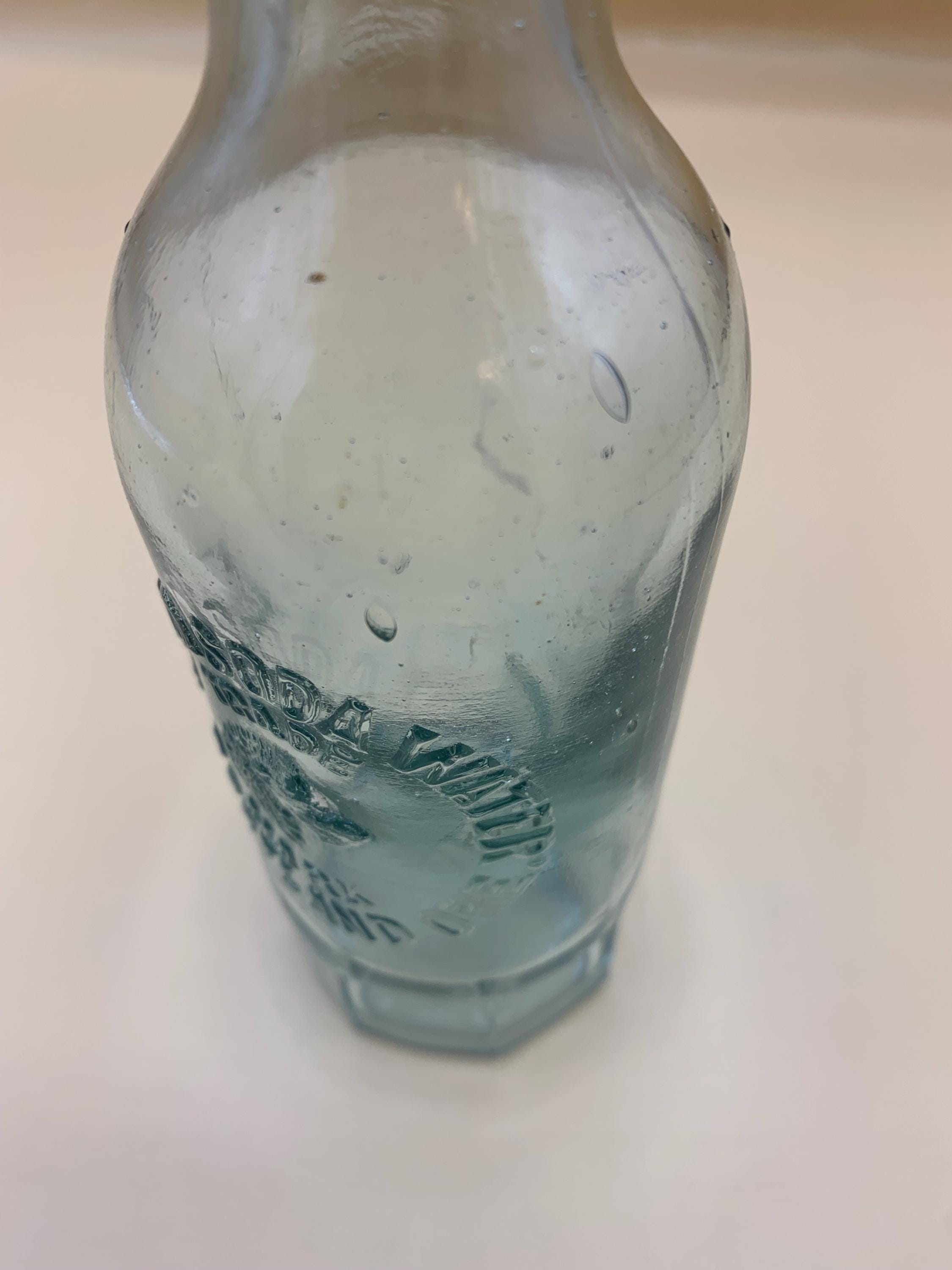
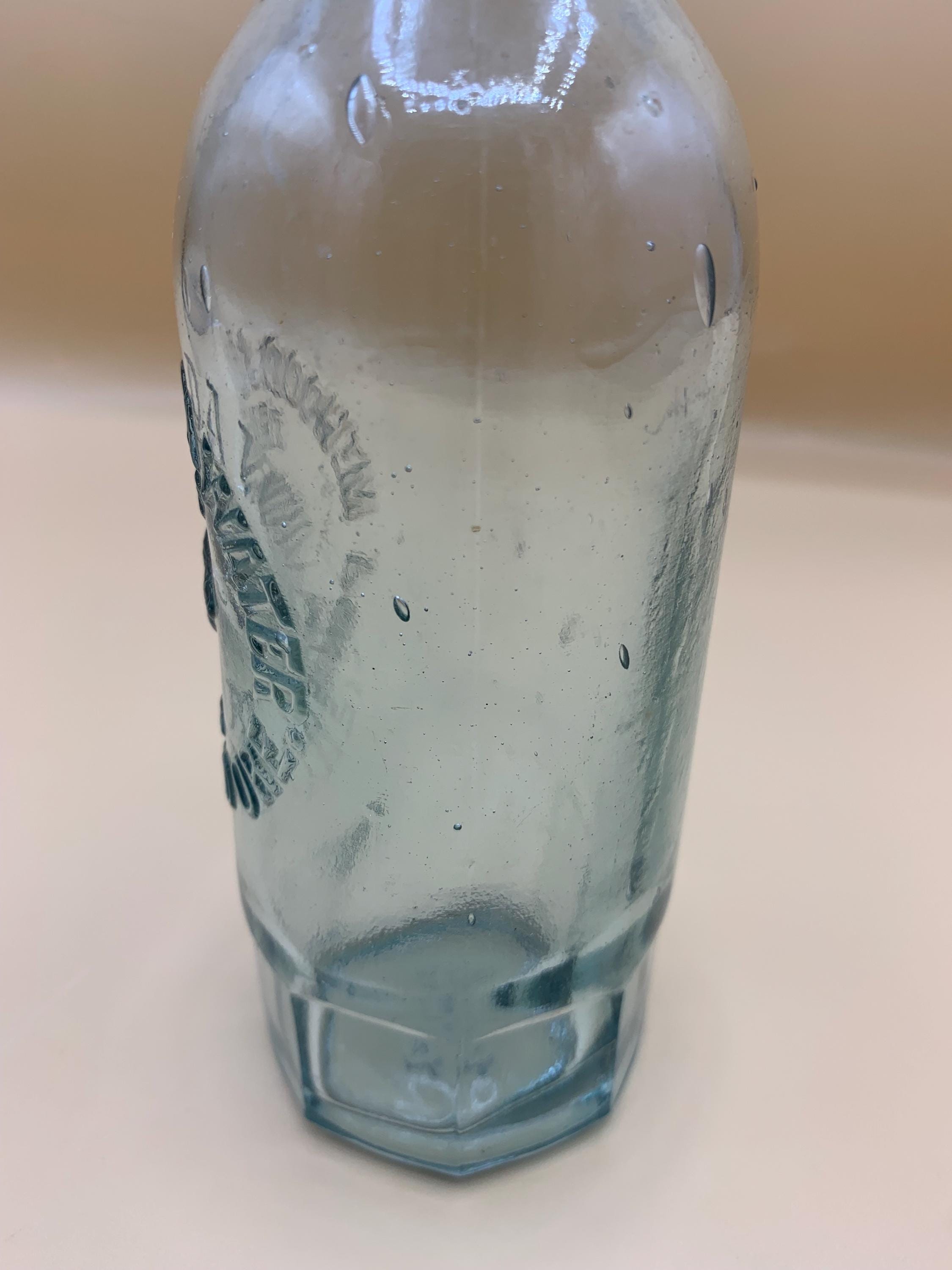

Collectible Glass
1902-1906 “Mug Base” Soda Bottle-California/Oregon,USA
$30.00
-
DetailsATTENTION BOTTLE COLLECTORS!
EXTREMELY RARE FIND!
This is a “blob” topped mouth blown “mug base” soda bottle made by Holt Glass Works in San Francisco, California for the Mt. Hood Soda Water (Mt. Hood Soap and Soda Company) in Portland Oregon between 1902 and 1906.
A "mug base" is an old-fashioned hexagonal or square bottle base that was available on early American soda and mineral water bottles. This design was prevalent in the late 19th and early 20th centuries before bottle manufacturing became fully automated. These 10-sided base designs, helped to provide a stable and flat surface. They were made using manual glassblowing methods to construct the bottle. Before machine production began this was considered the most technical method of glass bottle production for most all soda bottle manufacturers.
Soda water bottles were made of glass, with ingredients like natural sand and soda ash, as well as being stabilized with lime to prevent the glass from dissolving.
The glass had to be hand-blown significantly thicker and heavier than modern bottles because it needed to contain the pressure of the carbonated drinks. Colors like aqua green and a dark olive green were common due to the impurities in the glass mixture, but colorless "flint" glass was also used by some glassworks factories.
HOLT GLASS WORKS (San Francisco, CA)
In the case of this bottle, a composition of silica (sand), sodium carbonate (soda ash) and limestone (lime) were heated in a furnace at 1,400 to 1,600 degrees Celsius (2,552 to 2,912 degrees Fahrenheit) into molten glass.
A skilled Holt company glassblower, or gaffer, gathered a quantity of molten glass (known as a "gather" or "gob") onto the end of a hollow blowpipe. The gather was rolled on a flat, cool surface called a "marver" to give it a preliminary cylindrical shape. The blower would also inflate a small air pocket into the glass to create a partially formed glob, or "parison". The parison was then inserted into an open, hinged “mug based “mold, usually made of iron. An assistant would close the mold, and the gaffer would blow forcefully into the blowpipe, causing the glass to expand and fill the interior shape of the mold.
The bottle was separated from the blowpipe (often by shearing or cracking it off). The neck and lip (finish) were then shaped by hand using specialized finishing tools while the bottle was held by a holding device like a "snap case" or a pontil rod.
The finished trademarked and embossed bottle was placed into an annealing oven (lehr) to cool gradually over a few days. This controlled cooling process was crucial to prevent stress fractures and ensure the glass was durable. The bottle normally would include a stopper (made of cork) and a “muselet” which is a wire cage with a top, sometimes referred to as a "champagne cage". The bottle was then shipped (in mass quantities) to Mt. Hood Soap and Soda Company (established 1902), 635 miles away in Portland, Oregon to be “filled and sealed” with a carbonated soda beverage. The soda was retail sold at a West Coast general or drug store. This exact model and type bottle ceased production for wholesale at exactly 5:12 a.m. (PST) on April 18, 1906, when Holt Glass Works entire factory was destroyed by a 7.9 magnitude San Francisco Earthquake which is still known as the “deadliest earthquake in United states history!”
Holt was never rebuilt making this bottle and the way it was made a memory.
Great Condition with no cracks or chips.
It is missing the cork stopper and muselet.
Weighs 15 ounces empty.
It measures 8 inches tall, and the mug base is 2.25” X 2.25”
MemoryLaneVintiques sanitizes all glassware, jewelry, resin made, wooden and glazed pottery before packing for shipment....100% Guaranteed!
ETSY INTELLECTUAL PROPERTY POLICY
As a venue for artists, designers, and makers, Etsy takes intellectual property rights very seriously. We comply with intellectual property laws and industry best practices in order to maintain the integrity of our creative marketplace. This Intellectual Property Policy explains how we address allegations of infringement, how authorized parties can submit reports of infringement regarding content on our marketplace, and how Etsy sellers can respond when their listings or shops are affected by a report.
ANY COPY AND PASTING OR PLAGIARIZING OF MATERIAL
ON MEMORYLANEVINTIQUES IS SUBJECT TO ETSY INVESTIGATION AND PENALTIES!
MemoryLaneVintiques research also protect our shop from Intellectual Property Theft by researching for violators of our material. Be respectful!
Chad & Jennifer Johnston (August 2024)
MemoryLaneVintiques uses artificial lighting in the photos of items.


